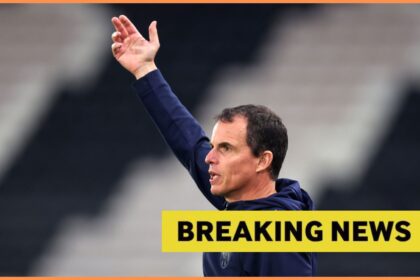In 2025, the Cubs’ offense was a major strength, fueled by key contributions from last winter’s top acquisition Kyle Tucker, a breakout year from Michael Busch, and a strong first half from Pete Crow-Armstrong. When healthy, Tucker lived up to expectations, leading the offense and elevating those around him. However, the team’s production faltered in the second half of the season, culminating in a second-round exit in the National League playoffs, leaving the Cubs facing more questions than answers as they approach the offseason.
The biggest uncertainty lies in replacing Tucker’s bat— a 28-year-old right fielder and this winter’s premier free agent, potentially commanding upwards of $400 million. While the Cubs express a desire to retain him, industry insiders doubt Chicago intends to do so. Despite battling a calf strain and a hairline fracture, Tucker still managed a .266 batting average with 22 home runs and 73 RBIs, showcasing elite performance when fully healthy. In the first half, he posted a .280/.384/.499 line with 17 home runs and displayed Gold Glove-caliber defense.
If Tucker departs, the Cubs must figure out how to fill the gap. President of baseball operations Jed Hoyer emphasized continuing to improve the offense but identified pitching as the main offseason focus. Even with a second-half slump, the Cubs ranked fifth in MLB in runs scored. Players like Busch give cause for optimism, though Crow-Armstrong’s second-half OPS of .634 raises concerns. The 23-year-old outfielder Pete Crow-Armstrong, nicknamed PCA, thrilled fans with his first-half offensive brilliance and exceptional defense, and Hoyer highlighted the value of elite defenders earning lineup opportunities.
Looking ahead to free agency, potential offensive replacements include former Cub Kyle Schwarber and third baseman Alex Bregman, who Chicago pursued last winter. Schwarber’s return would excite fans, while Bregman, a consistent performer and recent Red Sox All-Star, fits well in the lineup. The key question is whether the Cubs will invest heavily, with history suggesting more spending on pitching than on offense.
While the Cubs’ offense was better than their second-half and postseason showing, obvious flaws need addressing to return to playoff contention. Although pitching remains a priority, neglecting offensive reinforcements could be a costly misstep.
Fan Take: This offseason will be pivotal for the Cubs and their fans, as decisions on retaining or replacing key offensive players like Kyle Tucker could reshape the team’s identity. For baseball fans, it highlights the ongoing challenge of balancing pitching and hitting talent while navigating big-market pressures and expectations.



